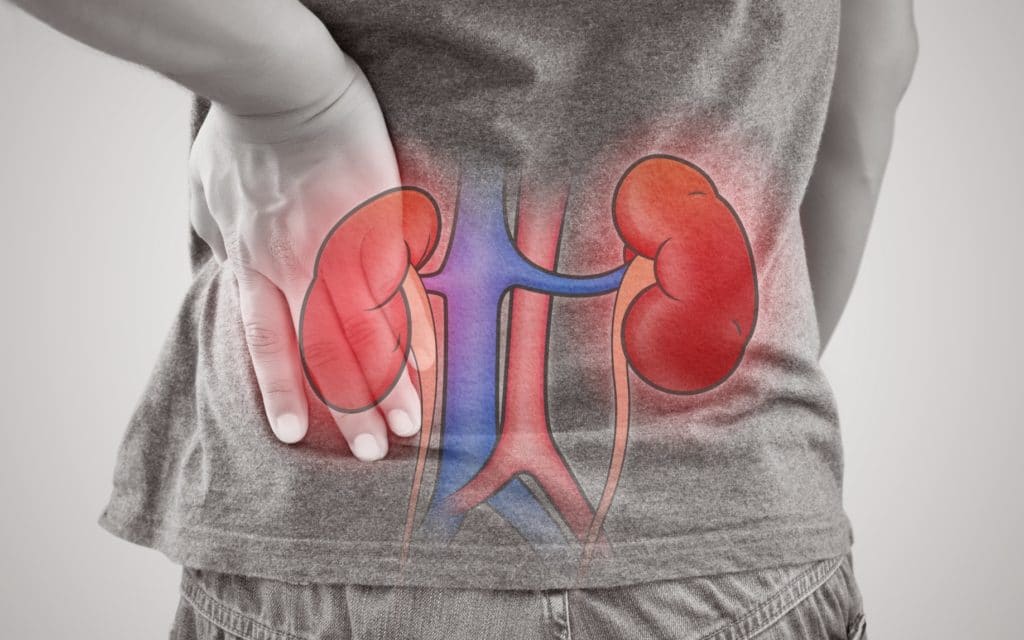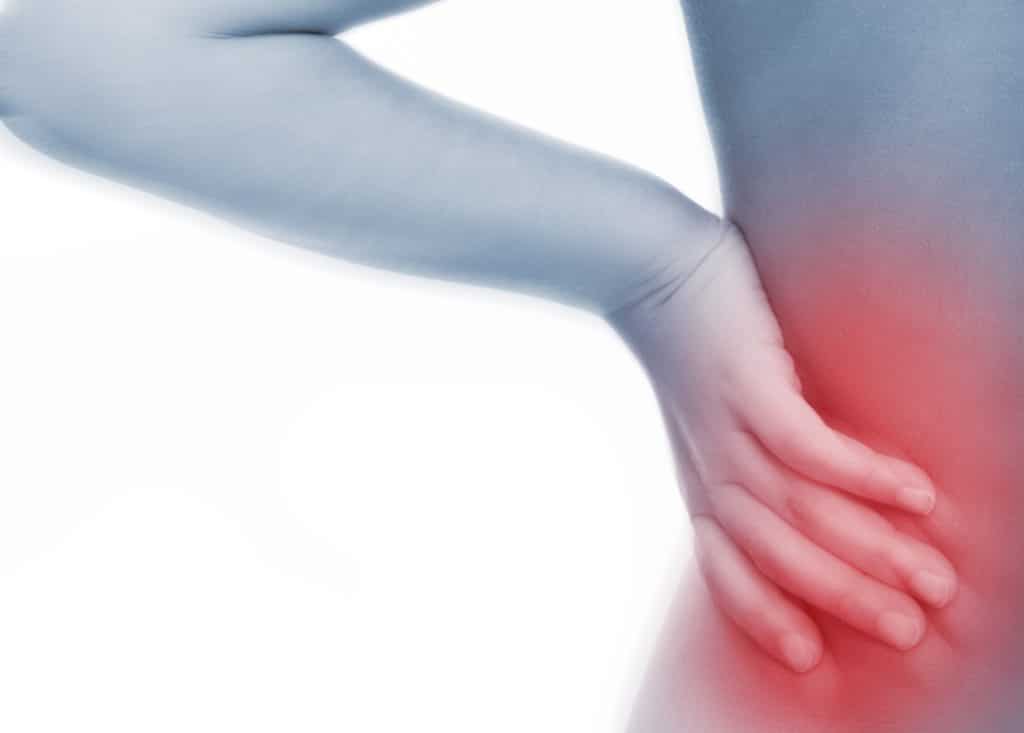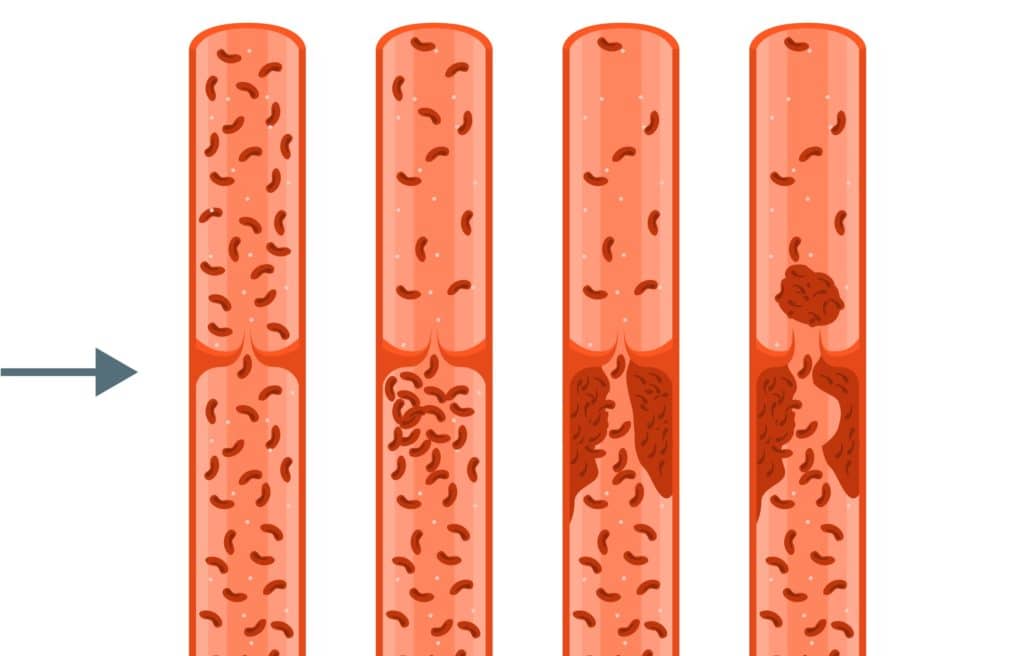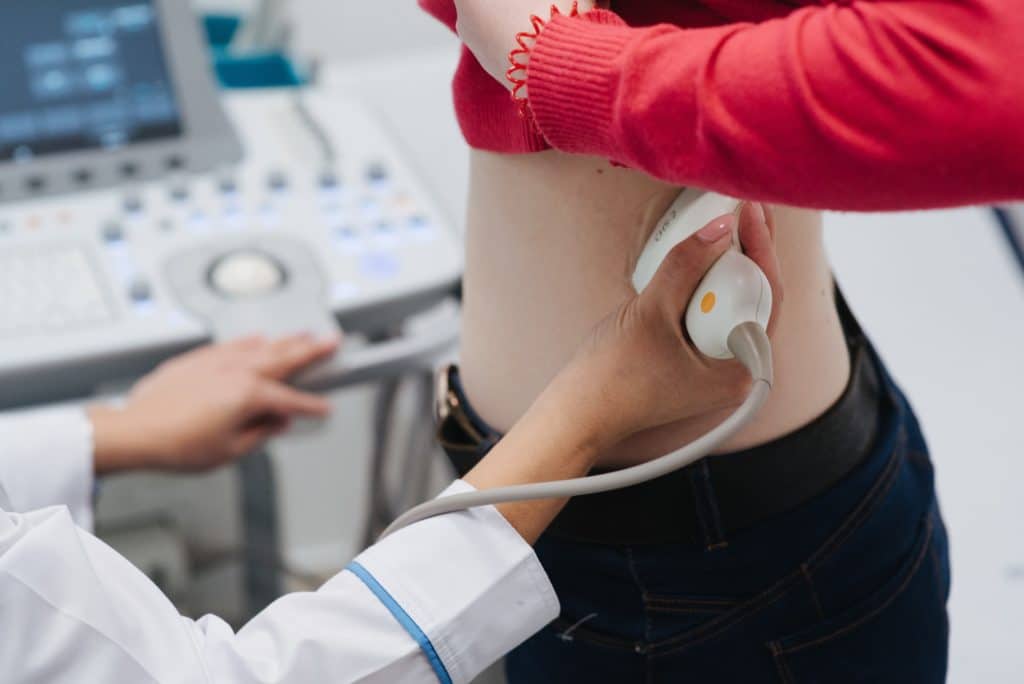Renal dysfunction due to blood clot in the renal vein
In the case of a renal vein thrombosis is a Vascular occlusion is in the renal vein caused by a blood clot that has formed locally or in the blood stream was supported. The impaired blood transport or complete blood blockage can trigger acute violent symptoms. Most often the disease begins, but only gradually, and manifests itself without, or with only mild discomfort. For successful treatment, it is not only important for the thrombosis to dissolve or remove, but to identify the triggers and underlying basic diseases.
Table of contents
A brief Overview
The following Overview offers a quick reference to the most important facts around the topic of renal vein thrombosis. For detailed information on the disease picture are found in the following article.
- Definition: In the case of a one – or two-sided renal vein thrombosis is a vascular disease due to a blood clot in the renal vein. The resulting Vascular occlusion leads to impairment of blood flow and kidney functions.
- Symptoms: in most cases, insidious, chronic course of the disease is not rarely expressed with only slight discomfort, or even initially symptom-free. In the advanced stage, or in the case of an acute Occurrence, it can get very pain, flank pain, and other symptoms of renal dysfunction, such as blood in the urine.
- Causes: in addition to pathological changes of the kidney or injury to the kidney tissue are mainly basic disease as a trigger for venous thrombosis. Most frequently, a nephrotic syndrome is the cause in adults, for example due to a Glomerulonephritis or a blood clotting disorder (Hypercoagulability).
- Diagnosis: Different imaging methods can a thrombosis. In x – rays (Venography), CT- and MRI-Angiography and ultrasound (Doppler and duplex sonography).
- Treatment: Primarily, the causes, treatment, supplemented by the administration of drugs for the prevention or resolution of a vessel, a stopper, and possibly also against pain. Usually, the therapy lasts for up to a year and can also be life-long. Rarely there is a need for a surgical removal of the blood clot.
- Naturopathic treatment: Supportive methods of natural healing such as herbal medicine can be used, to thrombosis prevent. A healthy diet with sufficient Omega-3 fatty acids, sufficient physical exercise and sufficient fluid has generally good for your health and reduces the risk of thrombosis.

Definition
Renal vein thrombosis (NVT) is one of the diseases of the circulatory system, in the case of a one-sided or two-sided thrombosis or embolism of the paired renal vein (Vena ranalis). This is due to a blood clot in the renal vein to a partial or complete Vascular occlusion with impairment of the blood TRANS-ports.
Generally, this type of thrombosis is diagnosed more rarely. Often it comes to Evidence in connection with certain underlying diseases, such as nephrotic syndrome or cancer. The acute Form happens very much rarer than the chronic and gradual renal vein thrombosis. The consequences can be kidney dysfunction, kidney damage or a kidney infarction.
The disease can) occur at any age, but most of the time ill adults and the elderly (over 70 years. A slightly increased incidence is also found to about the twentieth year. The disease occurs in newborns and children, this is usually the result of dehydration.
Symptoms
In most cases, the disease begins insidiously and discomfort occur only gradually or remain even. Often one recognizes a renal vein thrombosis only then, if further follow-up add symptoms. So it to a partial detachment of the blood clot may come, which is carried by the blood stream and then to other body a vessel clogged, such as, for example, in the lungs (pulmonary embolism). This results in the following complaints are pain sudden chest and shortness of breath.
The typical symptoms that can occur in a congested renal vein and renal impairment, are:
- Flank pain,
- Back pain (in the area of the lower Ribs) and hip pain,
- low urination (oliguria),
- Gross hematuria (blood in the urine) and proteinuria (protein in the urine),
- Edema (Water Retention),
- Nausea and vomiting,
- Fever.

These symptoms occur mainly with acute renal closure, and are often accompanied by severe pain. The sudden occlusion of the renal vein caused by a blood traffic jam in the kidney, which is usually strong renal colic, and flank pain. Of the acute Form, children are mainly affected.
In adults, the much more frequent partial closure leads to less cramp-like discomfort rather than a permanent pain in the flanks. But also an incomplete closure if left untreated in the further history to the death of the renal tissue with loss of functions and corresponding symptoms.
Possible complaints depend on the causes of the disease. A renal carcinoma is, for example, it is usually in the context of cancer to a weight loss.
Causes
Renal vein thrombosis usually occurs as a result of another disease or by a previous Trauma. This primary trigger such as kidney injury, kidney cysts, surgery on the kidney or not, rarely, renal tumors. Other diseases are to be regarded as the secondary causes (outside the kidney) and include various metabolic and auto-immune diseases.
In the vast majority of cases, the thrombosis in adults is caused by a nephrotic syndrome, which often develops as a result of a Glomerulonephritis. This is a symptom complex that includes increased protein excretion in the urine (proteinuria) , low protein concentration in the blood, high blood fat levels (hyperlipidaemia) and Edema. These are clear signs of inflammation of the kidney with damage to the Renal corpuscles and their Gefäßknäul (Glomerulus).
But it is also a blood clotting disorder (Hypercoagulability) can lead to nephrotic syndrome and, consequently, to a venous thrombosis in the kidney because an increased coagulability of the blood due to an increased risk for Thrombus formation (thrombophilia). Furthermore, other diseases such as Diabetes mellitus can lead to a nephrotic syndrome (diabetic nephropathy).

In children, internal desiccation (dehydration) due to a lack of fluid intake, or massive fluid loss, for example, is common in diarrhea and vomiting reason for the Occurrence of the disease.
Sometimes it is not possible to determine the underlying causes clearly. In this context, one speaks of idiopathic renal vein thrombosis.
Diagnosis
A proven and precise method for the detection of renal vein thrombosis represents the x-ray examination of the kidney veins (Venography). By means of a contrast by means of you get very accurate results, however, the procedure is associated with the risk of a blood clot detaches and an embolism caused. To avoid this complication, other imaging techniques are nowadays increasingly used. The angiography using computed tomography (CT) or magnetic resonance imaging (MRI) and Doppler ultrasonography. In the ultrasound enlarged kidney and a blocked flow of blood can be visible, but it comes sometimes to wrong results.
These diagnostic procedures are not sufficient, and the causes in the context of persistent symptoms is unknown, should take place more specific studies.
Treatment
In the first line, the corresponding causes of treatment is a confirmed underlying disease in the foreground. In addition, often medications are used, the vascular graft to dissolve (especially in the acute case), respectively, which prevent the formation of. In preparations for the clot dissolution (thrombolytic agents) and antiplatelet agents (anticoagulants) such as Heparin and coumarin.
The duration of treatment extends usually over a period of six to twelve months. It may, however, Affected also to be a permanent medication to prevent a repeated Occurrence. But also to prevent, in particular, the therapy of the underlying disease is crucial.
In rare cases, there is a need for a Thrombectomy in a blood clot using a catheter or a surgical intervention. If severe pain occur, should also be pain medication prescribed.

Naturopathic Treatment
A thrombosis is generally a dangerous disease, and always requires a medical treatment. Naturopathy can assist in the prevention, especially in the case of superficial venous thrombosis. In the case of a (deep-lying) renal vein thrombosis naturopathic treatments can be useful if, for example, a genetic or acquired tendency to Thrombosis (thrombophilia).
Various home remedies, moderate exercise and some natural remedies have proved to be effective to a flow of blood by clot formation prevent. Basically, a healthy diet with enough Omega-3, it should be noted fatty acids and a sufficient liquid supply. Too little Drinking causes thicker blood and a higher risk of thrombosis, whereas a lot of fluid circulation boosts.
In the case of venous disease, the phytotherapy is often used. Is recognized by the internal use of Rutin, which is found in various medicinal plants. Often is used buckwheat. Rutin helps to strengthen the blood vessel walls and the capillary walls. Areas of use Diabetes mellitus and hypertension in addition to thrombosis, and varicose veins. (jvs, cs)
To Read More:
Kidney jam
Kidney problems
Kidney pain
